2019 Toyota Prius AWD-e Tires, Repair & Service
Get Started
Complete Auto Care for Your 2019 Toyota Prius AWD-e
-
TIRES FOR YOUR 2019 Toyota Prius AWD-e View Tire Info GET TIRE PRICING
-
REPAIR FOR YOUR 2019 Toyota Prius AWD-e View Repair Info SCHEDULE REPAIR
-
MAINTENANCE FOR YOUR 2019 Toyota Prius AWD-e View Maintenance Info SCHEDULE MAINTENANCE
-
OFFERS FOR YOUR 2019 Toyota Prius AWD-e Limited Time Tire Offers VIEW ALL COUPONS
2019 Toyota Prius AWD-e Tires
Recommended Tires | Tire Information
2019 Toyota Prius AWD-e Tires Sizes, Speed Ratings, and Inflation
Not sure about your 2019 Toyota Prius AWD-e tire size? Use the following chart to find information on tire size, speed rating, and inflation.
| Trim Level | Speed Rating | Inflation in PSI F/R | Tire Size |
|---|---|---|---|
| 2019 Toyota Prius AWD-e XLE | S | 36 PSI/35 PSI | 195/65R15 |
| 2019 Toyota Prius AWD-e LE | S | 36 PSI/35 PSI | 195/65R15 |
|
2019 Toyota Prius AWD-e XLE Speed Rating: S Inflation F/R: 36 PSI/35 PSI |
|
2019 Toyota Prius AWD-e LE Speed Rating: S Inflation F/R: 36 PSI/35 PSI |
* Note: these models have different tire sizes depending on vehicle options.
Recommended Tires for Your 2019 Toyota Prius AWD-e
What tires are best for a 2019 Toyota Prius AWD-e? Check out the following tire brands and types.
 Blizzak WS90
Blizzak WS90
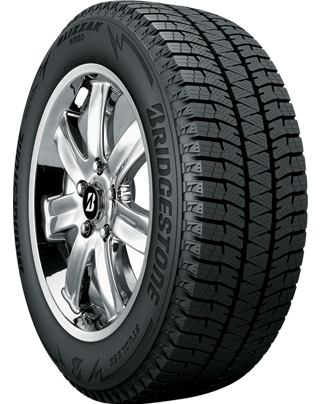
- No warranty
- Winter
- Winter
 Ecopia EP422 Plus
Ecopia EP422 Plus
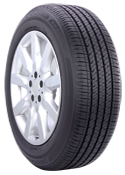
- Platinum Pact Limited Warranty
- All-Season
- Performance
 Turanza QUIETTRACK
Turanza QUIETTRACK
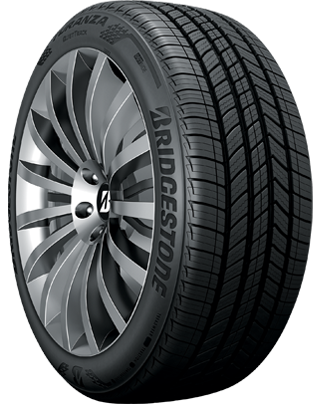
- No warranty
- All-Season
- Performance
 WEATHERPEAK
WEATHERPEAK
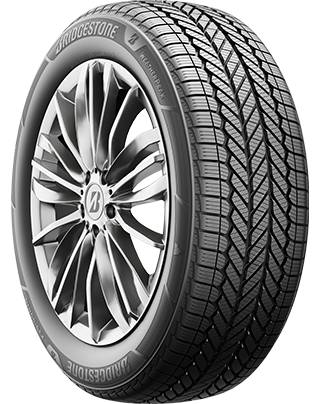
- Platinum Pact Limited Warranty
- All-Season
- Passenger Tires
 ALL SEASON
ALL SEASON
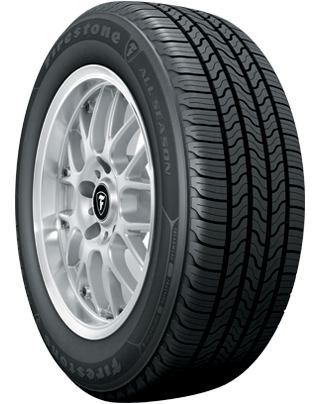
- No warranty
- All-Season
- Passenger Tires
 FT140
FT140
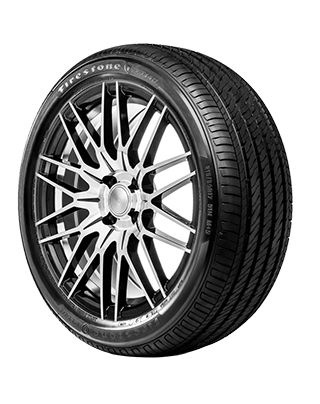
- No warranty
- All-Season
- Passenger Tires
 WEATHERGRIP
WEATHERGRIP
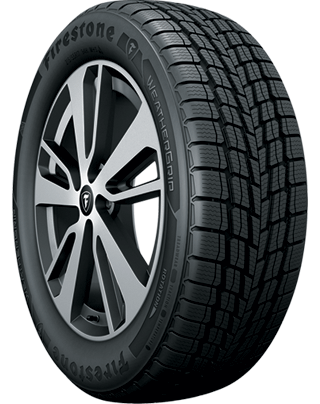
- No warranty
- All-Season
- Passenger Tires
 Winterforce 2
Winterforce 2
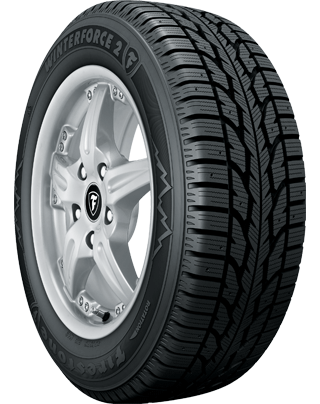
- No warranty
- Winter
- Winter
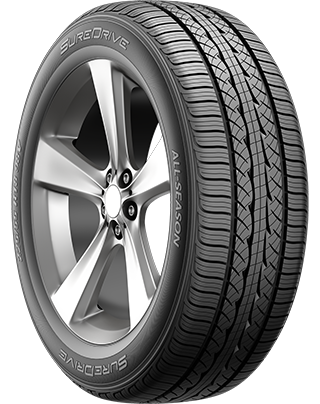
- No warranty
- All-Season
- Passenger Tires
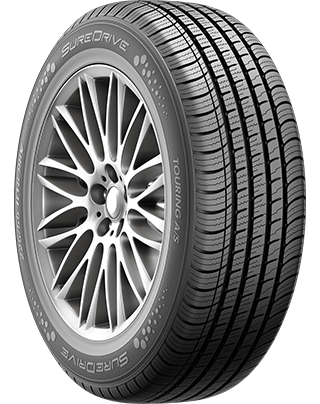
- No warranty
- All-Season
- Passenger Tires
 Extensa A/S II
Extensa A/S II
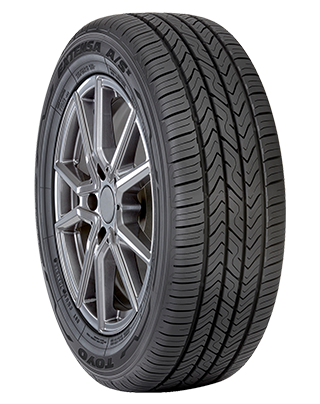
- No warranty
- All-Season
- Passenger Tires
2019 Toyota Prius AWD-e Tire Information
Beyond the correct tire size, there are a couple of other factors to consider when buying Toyota Prius AWD-e tires like where and how you drive, and what tire brand you trust most. When evaluating your driving conditions, think about where you live (countryside vs. city vs. mountains) and the kind of unexpected weather you're likely to experience. It's not uncommon for drivers in states that experience all four seasons to buy more than one set of tires. one for summer and one for winter. Other drivers prefer to purchase one all-season set to limit trips to the tire shop and make sure their vehicle is prepared in the rain, sleet, snow, or sun!
Driving style is next on the list to think about when buying tires. If you're a big off-roading fan who forges paths where others can't, you have very different needs than a long-distance commuter who sticks to the highway. Talk to a tire technician at Firestone Complete Auto Care for help choosing the best tire for you, or start shopping for Toyota Prius AWD-e tires online.
Toyota Prius AWD-e Installation and More
Firestone Complete Auto Care has been a leading tire provider for more than a century. We're a tire store that also offers professional tire installation, maintenance, and rotation, along with complete auto care. We make it easy to buy new 2019 Toyota Prius AWD-e tires online and book an installation appointment at the same time.
2019 Toyota Prius AWD-e Tire Q&A
-
Why check Toyota tire inflation? The right tire pressure can make all the difference. Proper tire inflation helps increase fuel economy, improve braking time, and boost tire lifespan! Even a small change in tire pressure can impact your driving.
-
Why are there numbers on the side of my Toyota Prius AWD-e tires? Your tire sidewall numbers tell you the recommended load carrying capacity, speed rating, treadwear, traction, and tire size. Talk to a tire technician to learn how to read Toyota tire numbers.
-
Can I check the tread depth on my Toyota tires at home? Stay on top of your tire tread depth to help avoid a dangerous drive. You can check tread depth with a penny. Hold the penny so that Abraham Lincoln is facing you, then place your penny into a tread groove upside down. If you can see the top of Abe’s head, your tread is shallow and it might be time for new Toyota Prius AWD-e tires. Grab a penny. Hold the so that Abe Lincon's head is facing you and his hair is pointing toward the ground. Then, place the penny into a tread groove. If you can see the top of Abe’s head, your tread is shallow and it might be time for new Toyota Prius AWD-e tires.
2019 Toyota Prius AWD-e Repair
Want more details? Choose a service below to read more about Toyota Prius AWD-e repairs at Firestone Complete Auto Care.
About 2019 Toyota Prius AWD-e Repairs
For most drivers, the words “car repair” don’t exactly spark excitement. But we work to provide you with a different experience at Firestone Complete Auto Care. When you come to us for 2019 Toyota Prius AWD-e repair services, our technicians will take care of your Prius AWD-e like it was their own. We’ll start by assessing what repairs may be needed, and we’ll provide you with a detailed explanation of what we recommend. We value your trust, so we recommend only the repairs we think are necessary for your safety on the road.
How Much Does Toyota Prius AWD-e Repair Cost?
Several factors can affect the cost to repair your 2019 Toyota Prius AWD-e, including which repairs are needed, costs of replacement parts or repair supplies, how much labor the repair will take, and the state you live in. And check back often — we update our deals regularly!
A few different aspects can influence repair costs for your 2019 Toyota Prius AWD-e, like
2019 Toyota Prius AWD-e Auto Repair Q&A
-
Do I need to follow Toyota's maintenance schedule? The cheapest 2019 Toyota Prius AWD-e repair is the one that isn’t necessary in the first place! Staying up-to-date with your car’s scheduled maintenance services is a great way to keep future repair costs low.
-
What's wrong if something feels 'off' in my Toyota? You’re in your car, day in and day out. So, it’s only expected that you know your car better than anyone else! If you notice mysterious smells, strange engine noises, or other out-of-the-ordinary symptoms while driving, trust your instincts and stop into Firestone Complete Auto Care for a Courtesy Check. Catching a potential issue early could help prevent Toyota Prius AWD-e repairs.
-
Are the repairs you recommend for my Toyota actually needed? We won’t recommend a service or repair for your 2019 Toyota Prius AWD-e unless we think it’s necessary to keep you safe. Want to know more about a specific recommended repair? Ask! We’re here to help.
Get Your 2019 Toyota Prius AWD-e Brakes Fixed
You might have a strong and reliable engine in your Toyota Prius AWD-e. But if you can't stop it, then it's scrap metal. If you notice your brakes are squeaking or not working well, don’t wait! Safe driving is difficult when your brakes are anything but their best. Plus, waiting can lead to more expensive parts wearing out and requiring replacement. Visit Firestone Complete Auto Care for the right brake repair for your 2019 Toyota Prius AWD-e. Our brake repair services include brake pad/shoe replacement, brake rotor/drum machining, brake fluid exchange/bleeding, and brake caliper and wheel cylinder installation.
Answers to Your Prius AWD-e Brakes Questions
-
What can cause my Prius AWD-e to shake when I apply the brakes? Your Prius AWD-e could shake when you brake due to worn brake pads or rotors, warped rotors, loose or worn suspension components, or faulty brake calipers. You can always schedule a free brake inspection at the first sign of strange brake behavior.
-
How long should my Prius AWD-e brake pads last? In general, brake pads can last from 30,000 to 40,000 miles. Certain factors, like driving on highways mostly and braking smoothly, can help your brake pads last longer. Hauling heavy loads and riding your brakes can shorten brake pad lifespan.
-
Should my Prius AWD-e be leaking brake fluid when the car is off? Your Prius AWD-e brake system is a closed hydraulic system, which means that the brake fluid should not leak out of the system under normal circumstances. However, over time, the various components of the brake system can wear out or become damaged, which can cause brake fluid to leak out of the system.
Repairing Your Toyota Prius AWD-e Drivetrain
You don't want to go to just anyone for drivetrain repair. Drivetrains for front, rear, and all-wheel-drive and 4WD vehicles are all different. You want to visit Firestone Complete Auto Care. We can fix many 2019 Toyota Prius AWD-e drivetrain components Your Toyota could be crying out for driveshaft repair if you notice vibration as your vehicle accelerates, clunks when shifting, heavy vibrations in your floorboards, or resistance when turning.
2019 Toyota Prius AWD-e Drivetrain Questions
-
What are signs my Toyota drivetrain is damaged? Noises toward the back of your Toyota Prius AWD-e, leaking fluid, trouble turning — these could all be signs of drivetrain damage you want to address. Take action before something more severe happens.
-
What triggers the malfunction indicator light (MIL) in a Prius AWD-e? A multitude of problems can activate your Prius AWD-e’s malfunction indicator light (better known as the check engine light), including issues with the engine, transmission, sensors, electrical system, or connectors.
-
How concerning is a drivetrain malfunction in my Prius AWD-e? If you experience a drivetrain malfunction in your Prius AWD-e, it is important to have it inspected by a professional mechanic as soon as possible to identify the underlying cause and perform the necessary repairs. Driving with a malfunctioning drivetrain can be dangerous and cause further damage to your car.
2019 Toyota Prius AWD-e Wheel Alignment
With an alignment service, adjustments are made to your Toyota Prius AWD-e’s suspension system, which serves to attach your wheels to your vehicle. During the service, calculated changes are made to the angles of your tires. This is so that your tires hit the road at an optimal angle for your vehicle’s performance — just as Toyota intended. Bring your 2019 Toyota Prius AWD-e in for a wheel alignment and we'll start with an alignment check. If needed, we'll adjust your wheel alignment angles to match Toyota recommendations.
Questions About Toyota Prius AWD-e Alignment
-
How can I avoid knocking my Toyota Prius AWD-e out of alignment? Potholes and uneven roads can knock your car out of alignment, so stay aware of the road ahead and adjust your speed (or avoid these obstacles whenever it’s safely possible).
-
How frequently should you get a wheel alignment for your Prius AWD-e? Generally, it’s wise to have your alignment looked at around every 6,000 miles or 6 months, whichever happens first. You should check your Prius AWD-e owner’s manual to verify Toyota’s suggested interval.
-
Do you need to get your Prius AWD-e wheels aligned when you get new tires? While you don’t necessarily need to get an alignment when putting new tires on your Prius AWD-e, it’s still a good idea. Ensuring your wheels are properly aligned can help support optimal handling, tire wear, and fuel efficiency.
2019 Toyota Prius AWD-e Engine Services
When your Toyota Prius AWD-e engine needs repairs, our technicians will make sure you understand what’s going on before they start working on your engine. We make recommendations, but you make the final decision. If a repair isn’t urgent right now, we’ll let you know. If it's necessary for your safety, we'll make sure you understand that, too. We want to provide you with the information you need to make an informed engine repair decision. Choose Firestone Complete Auto Care for Toyota Prius AWD-e engine repairs and you can feel confident knowing that we use Toyota-approved parts and components like the timing belt, motor oil seal, fuses, or a different component.
Engine Q&A 2019 Toyota Prius AWD-e
-
Why does the check engine light come on when I start my Prius AWD-e? Generally, your check engine light turning on upon ignition is not a bad thing. It’s just your Prius AWD-e firing up its circuits. The light should turn off in a bit, but come see us if it doesn't.
-
Why does my Toyota engine sound different? Strange under-the-hood noises can point to problems within your Toyota Prius AWD-e engine. Tapping or knocking could mean you need an oil change. Whistling sounds could mean you have an intake leak or misaligned belt. Squealing may be caused by a loose fan belt, and grinding could be a sign that something is wrong with your brakes — not the engine.
-
Are you unknowingly damaging your Toyota Prius AWD-e engine? Certain driving habits can hurt your engine. These habits include driving on an empty fuel tank, revving your engine while the vehicle is in Park, or slamming the gas pedal while the engine is still cold. Steer clear of these habits to help protect engine performance and efficiency.
Tire Repair for Your 2019 Toyota Prius AWD-e
If your 2019 Toyota Prius AWD-e is in need of a tire inspection or possible flat tire repair, Firestone Complete Auto Care has your back. In some cases, a tire doesn’t have to be replaced – it can be plugged and patched with a simple repair. Depending on the damage, though, a repair might not be the right move. Our technicians can determine which option is best for your situation. We’ll begin by taking a look at where the damage is, the type and extent of the tire damage, and how all of your tires are wearing.
If we determine that your 2019 Toyota Prius AWD-e tire can be safely repaired, we’ll get to work on the steps to fix it: (1) Separate the tire from the vehicle wheel, (2) fill the puncture to keep the moisture out, and (3) re-seal the inside lining of your tire so that air won’t escape.
Frequently Asked Toyota Prius AWD-e Tire Repair Questions
-
What happens if I drive my Toyota on a flat tire? Driving on a flat or underinflated tire can put extra stress on your wheels and alignment. While it’s sometimes necessary to drive a short distance on a flat tire to get to a safe place, don’t take any other trips in your Prius AWD-e until you can have the flat tire repaired or replaced.
-
Is temporary sealant bad for my Toyota's tires? Fast fixes are a mixed blessing. They’ll help you get your Toyota Prius AWD-e to Firestone Complete Auto Care, but don’t count on them to keep you on the road for very long. Using a temporary sealant may also void a Bridgestone or Firestone tire warranty.
-
What can cause Prius AWD-e tires to keep losing air? If your Prius AWD-e tires are always losing air, you may have a puncture, damaged wheel, or leaking valve stem.
Maintenance for Your 2019 Toyota Prius AWD-e
Take care of your Toyota Prius AWD-e and it'll take care of you. With the right maintenance at the right time, your Prius AWD-e has a good chance of hitting 200,000 miles or more.
2019 Toyota Prius AWD-e Maintenance Schedule
What is the manufacturer recommended maintenance schedule for a 2019 Toyota Prius AWD-e? Find maintenance info for your vehicle.
About 2019 Toyota Prius AWD-e Scheduled Maintenance
It can be overwhelming, but fortunately, there’s a resource that takes the guesswork out of routine Prius AWD-e maintenance. Just follow your 2019 Toyota Prius AWD-e maintenance schedule! Toyota knows your vehicle inside and out (they made it, after all!), so they’ve designed this schedule with your car’s unique needs in mind. Driving conditions, climate variations, and other variables can affect which scheduled maintenance services you’ll need; in most cases, though, recommended maintenance will consist of services like oil changes, tire rotations, brake pad replacement, filter changes, and fluid checks and exchanges. Staying on track with routine service appointments can help your Prius AWD-e perform better, decrease your risk of dangerous malfunctions on the road, and help you avoid expensive repairs caused by 2019 Toyota Prius AWD-e problems later.
Overview of Essential Toyota Prius AWD-e Maintenance Needs
Bring your 2019 Toyota Prius AWD-e to Firestone Complete Auto Care for factory-recommended maintenance services and our technicians will jump right in with a Courtesy Check. A Courtesy Check helps "set the stage" for your service and catch any small problems before they turn into big repairs. Each Courtesy Check includes a free battery test and an inspection of your Prius AWD-e's windshield wiper blades, head and tail lights, filters, fluid levels, tires, and alignment.
Firestone Complete Auto Care is your spot for 2019 Toyota Prius AWD-e maintenance. So visit us regularly, or visit us urgently. Many locations are open on weekends and in the evening.
2019 Toyota Prius AWD-e Maintenance Q&A
-
What should I do after hitting a pothole in my Toyota Prius AWD-e? Check your car for pothole damage! If you’ve recently hit a pothole (or even if you don’t remember hitting one… they can be sneaky!) check your tire treads, tire sidewalls, and wheels for damage. Potholes can also knock your car out of alignment, so have your alignment checked if you suspect you’ve driven over a rough patch of road lately.
-
When should I use high mileage oil in my Toyota Prius AWD-e? If your Toyota Prius AWD-e has ticked past 75,000 miles, consider switching to high mileage oil at your next oil change to give your engine what it needs to go another 75,000 (or more!). High mileage oil: make it a high priority!
-
Why are my Toyota dashboard lights on? It's better to get them addressed as soon as possible. An illuminated dashboard light means something in your vehicle isn't functioning like it should. Letting problems linger can mean bad news for your Toyota Prius AWD-e, so be sure to take your car in for service as soon as you notice an illuminated dashboard light.
2019 Toyota Prius AWD-e Battery Replacement & Size
Researching battery replacements for your Toyota Prius AWD-e?
| Battery | Engine | Warranty | Cold Cranking Amps | |
|---|---|---|---|---|
| H4 | L4/1.8L | Replacement 36 months | Performance months | 480 |
Car Batteries for 2019 Toyota Prius AWD-e
The average car battery lasts three to five years. You want to replace your 2019 Toyota Prius AWD-e battery before it fails and leaves you stranded. Pay attention to clues that your battery is on its way out. A sluggish engine start, a blinking battery or check engine light, bloated battery case, corroded battery terminals, or faded headlights may all indicate that your battery is waving goodbye.
You can also get a Free Battery Test at your local Firestone Complete Auto Care. Visit us for a complimentary battery check and, if needed, get your Toyota Prius AWD-e a replacement battery. Automotive batteries are just one of our many areas of expertise. Our technicians are familiar with Toyota-specific recommendations for Prius AWD-e battery CCAs and reserve capacity. Get help identifying the type and size of battery that's best for your Prius AWD-e, and schedule an appointment today for a quick car battery replacement.
Commonly Asked Toyota Prius AWD-e Battery Questions
-
Why doesn’t my Toyota Prius AWD-e battery stay charged? A car battery that needs to be jump-started every time is as good as dead. It may be getting old. Or, you’ve been leaving the doors slightly open and the dome lights on during the night. Stop in for a free battery check at your nearest Firestone Complete Auto Care and learn more about your battery's charge.
-
How long can I expect my car battery to last? Car battery lifespan varies depending on a few factors, including driving conditions, accessories, how well it’s maintained, and the type of battery. On average, a car battery lasts about three to five years.
-
Why is there white, flaky stuff around my Prius AWD-e’s battery post? If you notice white, crusty stuff around the battery terminals of your Prius AWD-e, it's likely corrosion. A chemical reaction between battery acid and the air can create a white, powdery substance that builds up over time on the terminals. This buildup can interfere with the electrical connection between the battery and your Prius AWD-e’s electrical system, potentially leading to poor performance, difficulty starting, and other issues.
2019 Toyota Prius AWD-e Oil Changes
Toyota recommends changing your 2019 Prius AWD-e’s oil at regular intervals. No matter the mileage, your Prius AWD-e may need its oil changed ASAP if your check engine light is on, you hear knock knock knock coming from the engine, sense an oil smell in the cabin, or see an excess amount of vehicle exhaust. You may also need an oil change more frequently than Toyota recommends if you haul heavy loads, drive in dusty areas, enjoy off-roading, or go at low speeds on long distance trips.
Your local Firestone Complete Auto Care has the right 2019 Toyota Prius AWD-e motor oil: either synthetic or conventional. Talk with a teammate and consult your owner's manual before picking a motor oil. At Firestone Complete Auto Care, you can choose from the following oils: Quaker State® Advanced Durability™ conventional oil, Pennzoil® High Mileage Vehicle® motor oil, Pennzoil Platinum® Full Synthetic motor oil with PurePlus™ Technology, and Shell Rotella® heavy-duty engine oil. During an oil change, an auto technician will change your Prius AWD-e’s oil, replace and recycle your used oil and oil filter, check all of your other filters, top-off important fluids, and perform a courtesy inspection on your entire vehicle. Make an appointment for an oil change service today and let the oil experts take care of your Prius AWD-e's engine.
Oil Change Q&A for Your 2019 Toyota Prius AWD-e
-
What does it mean if my Toyota Prius AWD-e oil light comes on? Your Toyota Prius AWD-e oil change reminder light may come on if you're overdue for an oil change. The oil pressure light will typically come on if the oil level in the engine is too low, the oil pump is failing, you have a clogged oil filter, or there's a faulty oil pressure sensor.
-
Can I change my Toyota Prius AWD-e oil at home? First off, changing your own oil isn’t as easy as you’d think. You’ll have to buy special tools and figure out a way to recycle the old oil properly. Getting a professional oil change reduces the risk of something going wrong during the service, but also helps your car perform down the road.
-
Why is my Toyota Prius AWD-e spewing blue or gray exhaust smoke? You could have an oil leak and have a case of burning oil. Looks like it’s time for a professional to take a look. The leak could be the result of worn valve seals, fried piston rings, or old cylinder walls.
Engine Tune-Up Service for Your 2019 Toyota Prius AWD-e
Periodic tune-ups can bring more power back to your Prius AWD-e’s engine. Your nearest Firestone Complete Auto Care location has several options to choose from when it comes to Toyota Prius AWD-e engine tune-up services. One option is the standard Firestone Tune-Up. This includes the installation of new spark plugs and a visual inspection of your engine’s components, plus a lifetime warranty on parts*. The second service focuses on your Prius AWD-e's filters, specifically replacing the air filter and fuel filter. Our third service is a thorough cleaning of the fuel system. During this type of tune-up, we use a three-step process to get rid of harmful varnish, dirt, and carbon deposit buildup in your Prius AWD-e’s fuel injectors, throttle body, and throttle plate. The result? Restored fuel system performance. Consider this when choosing a tune-up service for your Prius AWD-e: your vehicle’s maintenance record and mileage can determine which service is best. Ask one of our technicians what your vehicle needs, based on your driving habits and your car’s current condition.
*Talk to a Firestone Complete Auto Care teammate for full terms and conditions on warranties.
Questions About 2019 Toyota Prius AWD-e Engine Tune-Ups
-
Will it hurt my Toyota Prius AWD-e to drive with old spark plugs? Replace spark plugs on time or about every 30,000 miles or so. Spark plugs are small but mighty. The spark of electricity that the plug emits across a small gap creates the ignition for the combustion needed to start your car. Without that spark, your car won't start.
-
What do I do if I see a pool of liquid under my Toyota Prius AWD-e? Puddles could indicate an oil leak, coolant leak, or brake fluid leak– all of which can critically hurt your engine. Have your engine inspected as soon as you spot a pool of liquid in your usual parking spot.
-
How often should I clean my Toyota Prius AWD-e fuel injectors? The frequency at which car fuel injectors should be cleaned can vary depending on several factors, including the type of fuel used and the driving conditions. Some manufacturers generally recommend a fuel system cleaning as part of your general car maintenance, or as needed based on symptoms of poor fuel system performance.
2019 Toyota Prius AWD-e Suspension Service & Repair
During the first few years you had your 2019 Toyota Prius AWD-e, the ride was probably so smooth that you didn’t even think about it! But these days, things are starting to feel a bit rough. Maybe your Prius AWD-e bounces, pulls to one side, or makes a weird sound when you drive over a speed bump or turn. The first sign of problems is a good time to bring your 2019 Toyota Prius AWD-e in for steering and suspension repairs. We’ll get to the source of your car problems and, if steering and suspension service is needed, we’ll go over the services you need and how much they will cost before we do any work.
2019 Toyota Prius AWD-e Steering & Suspension Questions
-
Why is my Toyota Prius AWD-e bouncing excessively? Damaged struts or shocks can't dampen road bumps properly, causing your vehicle to feel like a trampoline after each dip or bump.
-
What can cause the front end of my Prius AWD-e to dip forward when I apply the brakes? The forward dip in the front end of your Prius AWD-e when you brake is caused by the weight and momentum transferring to the front wheels. If your suspension system is in bad shape, it can fail to distribute this force, leading your front end to dip further downward.
-
Does tire pressure and tread depth impact my Toyota's suspension? Maintaining your tires can help reduce strain on the suspension, nd also let you know when it's time to replace your tires. A faltering steering and suspension system could lead to uneven tire wear.
Convenient & Local 2019 Toyota Prius AWD-e A/C Service
Our technicians will work to solve your 2019 Toyota Prius AWD-e A/C problems to the best of their ability. In this A/C performance inspection, we’ll check out the current condition of your 2019 Toyota Prius AWD-e A/C system to see if repair work is required. This check includes a visual inspection, performance test, and pressure and leak test.
Let's say we repair your 2019 Toyota Prius AWD-e A/C system. We will also perform an A/C evacuation and recharge. To do this, one of our technicians will remove the refrigerant in your A/C system (if there is even any left to remove). Then, they’ll perform an evacuation (also known as a discharge) on the entire system per Toyota guidelines. To finish, we’ll add new refrigerant to recharge the A/C system.
Questions About 2019 Toyota Prius AWD-e A/C Systems
-
Why is my Prius AWD-e A/C blowing hot air? If your car’s air conditioning isn’t blowing cold air at all (or it tries, then turns warm), you could have a clogged expansion valve, a faulty compressor clutch, a leak, or a malfunctioning fuse in the system.
-
What causes A/C system leaks? Over the years, the rubber seals and gaskets in your Prius AWD-e’s A/C system naturally degrade. Moisture can get into the system and cause a malfunction, or parts can simply wear out so that your system no longer seals properly.
-
Why does my Prius AWD-e’s A/C only work when the car is moving? There could be issues with one or more components in the air conditioning or electrical system. Your Prius AWD-e may have a faulty cooling fan or low refrigerant.
2019 Toyota Prius AWD-e Transmission Service
Your transmission carries power from the engine to the wheels so that you can drive at the speed you desire. Because of the transmission’s responsibility to translate the right dose of power into the right amount of speed, a small transmission issue can put a big dent in your Prius AWD-e’s performance. Toyota Prius AWD-e transmission problems can present themselves as shifting delays, jumping or grinding during acceleration, the car shaking at any speed, or whistling noises and a burning smell coming from under the hood. If you don’t pay attention to Toyota Prius AWD-e transmission trouble you could see your fuel economy decrease or find that you can't drive your Prius AWD-e at all. Our technicians know how to service your 2019 Prius AWD-e up to Toyota-recommended standards. As soon as you suspect something’s wrong with your Prius AWD-e’s transmission, book an appointment at your local Firestone Complete Auto Care to help keep your Toyota running for miles and miles.
2019 Toyota Prius AWD-e Transmission Q&A
-
How often does my Prius AWD-e transmission fluid need to be checked? Maintaining your Toyota Prius AWD-e transmission fluid is one of the best ways to maintain your transmission's health. A general rule of thumb is to have your transmission fluid checked and changed about every 30,000 to 60,000 miles, but that timeline can change if you're hard on your Toyota. Leaks or low transmission fluid are easy to spot and affordable to repair.
-
Can my Toyota Prius AWD-e leak transmission fluid? Yes. Toyota Prius AWD-e transmission fluid can leak over time and potentially cause transmission issues. Worn or damaged seals, a loose or damaged transmission pan, a cracked transmission housing, faulty transmission cooler lines, or an overfilled transmission could cause transmission fluid leaks.
-
Is it okay to drive a Prius AWD-e with a transmission fluid leak? Driving with a transmission fluid leak is not recommended. Transmission fluid is essential to the proper operation of the transmission system, and a leak can cause serious problems, including reduced performance, overheating, and potentially transmission failure.
Vehicle Inspection for 2019 Toyota Prius AWD-e
When you bring your vehicle to Firestone Complete Auto Care for any service, we’ll automatically do a multi-point Courtesy Check. The technician will begin by testing your Toyota Prius AWD-e's battery to find out how much charge is remaining on it. After we’ve inspected your Toyota Prius AWD-e’s battery, we’ll visually inspect your lights, windshield wipers, filters, alignment, tires, hoses, belts and fluid levels.
While every visit to your local Firestone Complete Auto Care includes a Courtesy Check, we can also dig deeper and perform a Complete Vehicle Inspection on your 2019 Toyota Prius AWD-e if you prefer. In addition to a visual check of everything that's included in a Courtesy Check, a Complete Vehicle Inspection also includes a thorough manual inspection of your steering, suspension, brakes, and exhaust system. This inspection is aimed at informing you of any major problems that could wreak havoc on your 2019 Toyota Prius AWD-e if left unaddressed.
Depending on your location, you may be able to take care of your state inspection or safety test at your local Firestone Complete Auto Care. Inspections are performed on a state-by-state basis and requirements vary.
Common 2019 Toyota Prius AWD-e Vehicle Inspection Questions
-
When does my Toyota Prius AWD-e need an inspection? You drive your car, day in and day out, so you know it best. If you notice unusual engine noises or you can’t shake the feeling that something is 'off,' start with a Courtesy Check to stay ahead of potential issues.
-
My 2019 Toyota Prius AWD-e failed the state inspection test. Can you fix it? There's a good chance we can. Stop by for a full system inspection and we'll get to the root of the issue.
-
When is the best time to get a complete vehicle inspection for my Toyota Prius AWD-e? The best time to have a complete vehicle inspection done on your Toyota Prius AWD-e is when you notice something is off but you can’t locate the issue yourself. Schedule an inspection if you experience any unusual symptoms, such as unfamiliar dashboard indicators, strange engine noises, or steering changes. An inspection can be especially beneficial before a road trip for the simple peace of mind. You can feel confident in your adventure!
2019 Toyota Prius AWD-e Radiator Repair & Service
Staying on top of routine radiator maintenance for your 2019 Toyota Prius AWD-e is a huge factor in the longevity of your engine. In fact, Toyota recommends replacing coolant/antifreeze at specific intervals, but you can also take note of any signs your radiator is going bad. You could be on the verge of a radiator-induced engine breakdown if you see coolant leaks under your car, high engine temperatures, or a dashboard light that indicates low coolant.
If you bring your vehicle to Firestone Complete Auto Care, we start with a comprehensive inspection of your Toyota Prius AWD-e’s cooling system. Then, we’ll move on to a machine-powered coolant exchange. Finally, we’ll refill the flushed sealants, lubricants and chemicals, then do a pressure check to catch any possible leaks. If you’re about to lose your cool over a too-hot engine, rest assured that we’ll take excellent care of your 2019 Toyota Prius AWD-e at Firestone Complete Auto Care.
Questions About Toyota Prius AWD-e Radiators
-
What does an illuminated coolant temperature light mean for my Toyota? f the coolant light illuminates on your dashboard, your engine could be overheating. Pull over to a safe area and wait for the engine to cool down. Then, head to your nearest Firestone Complete Auto Care for a coolant system check.
-
What can cause my Prius AWD-e to overheat? Low coolant, a damaged cooling fan, a faulty water pump, a malfunctioning thermostat, or a clogged radiator could all cause your Toyota Prius AWD-e engine to overheat.
-
My Prius AWD-e radiator sounds like it's rumbling or boiling! What's up? Your Prius AWD-e’s cooling system could contain air pockets or your radiator might be clogged. Another possibility is a faulty radiator cap, which is an easy fix!